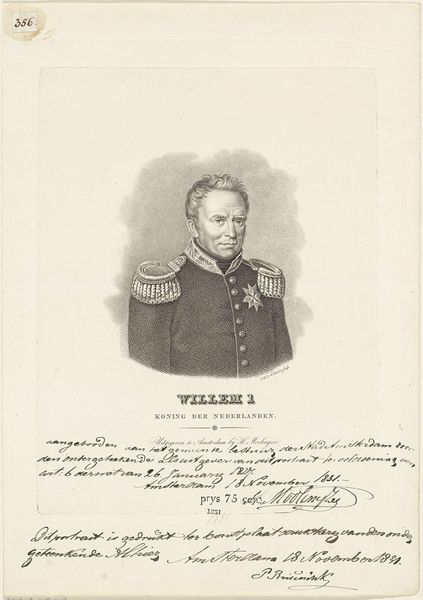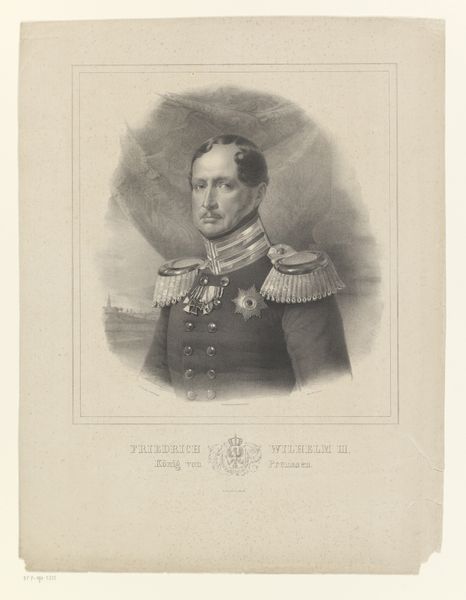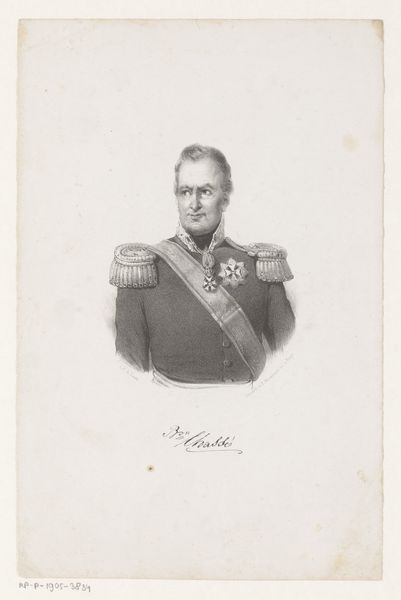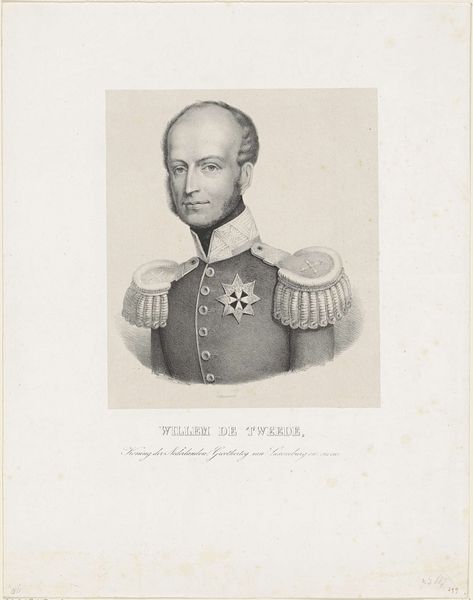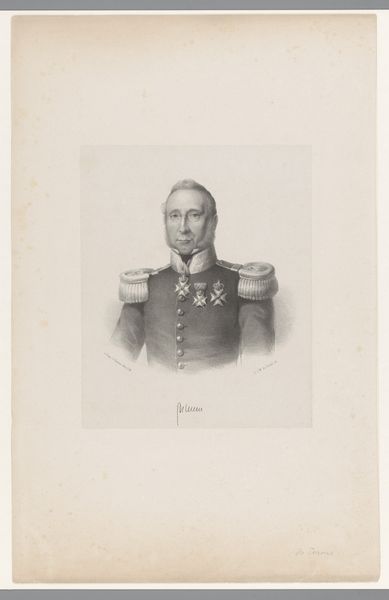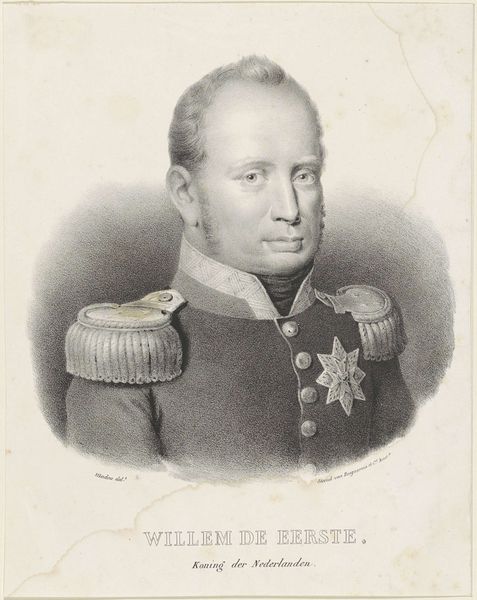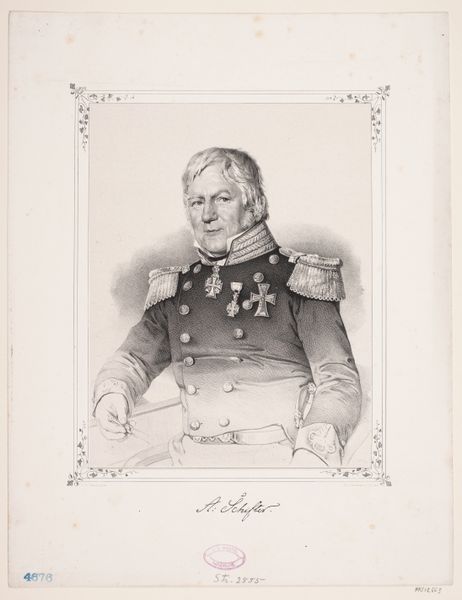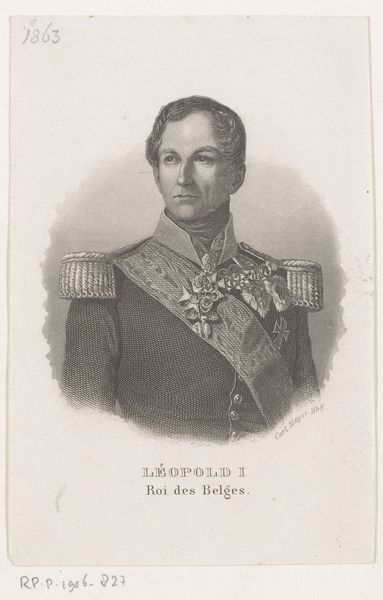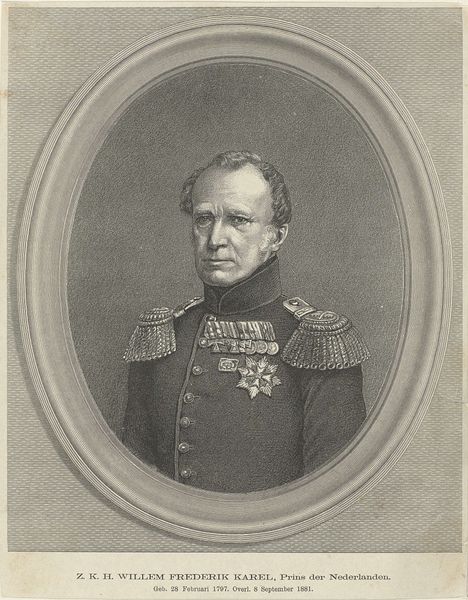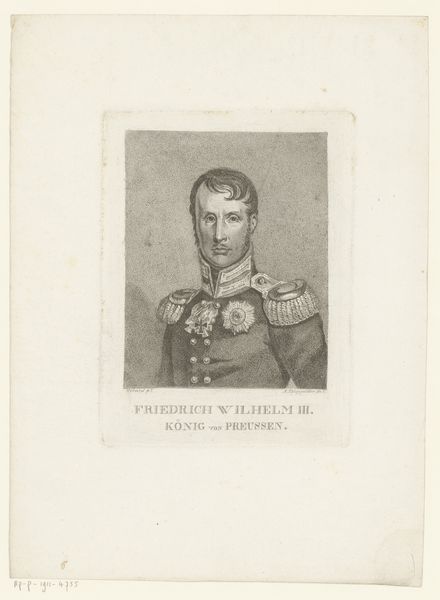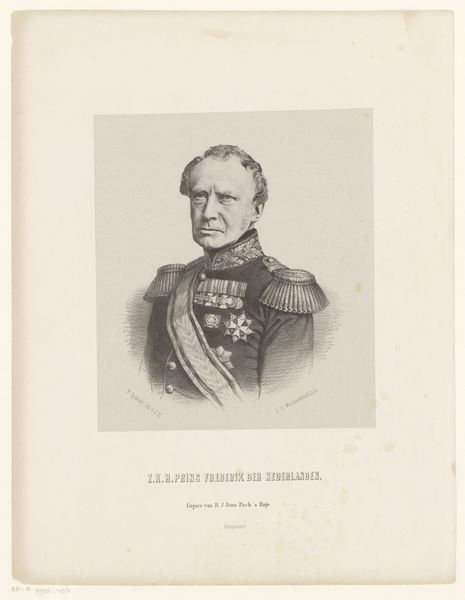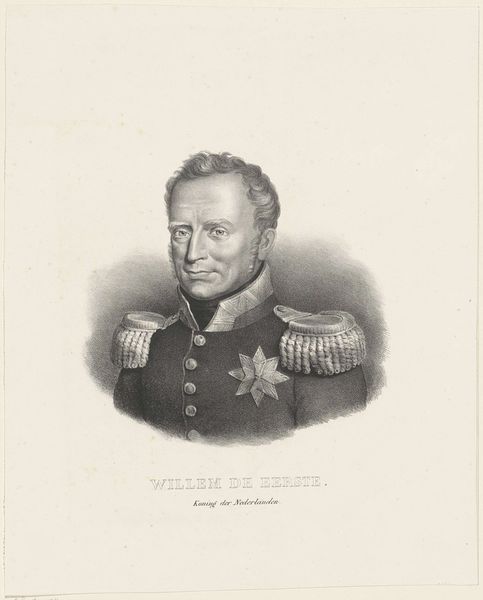
print, engraving
#
portrait
#
neoclacissism
# print
#
old engraving style
#
old-timey
#
19th century
#
history-painting
#
academic-art
#
engraving
#
realism
Dimensions: height 217 mm, width 133 mm
Copyright: Rijks Museum: Open Domain
Editor: Here we have a stately "Portret van Frederik Willem III, koning van Pruisen," or, Portrait of Frederick William III, King of Prussia. This print, dating roughly from 1797 to 1840, captures the Prussian king in formal attire. It’s rendered in a neoclassical style, emphasizing order and authority, but to me it feels somewhat… reserved, even stiff. What do you make of it? Curator: Oh, absolutely, there’s a deliberate stoicism here. You know, it almost whispers, rather than shouts, "King." Moritz Voigt’s choice of engraving reflects the cultural mood – an era of revolutions followed by a longing for stability. Think of it less as a celebration and more as a… well, an attempt to solidify an image. Do you notice the almost clinical detail of the uniform? Editor: Yes, it’s incredibly precise! And all the medals… it’s meant to impress. Curator: Exactly. It’s not just realism, it's *controlled* realism. Neoclassicism, at its heart, sought to bring back a sense of order inspired by the Roman Empire. It aimed to ground everything. That level of precision almost tries to give permanence to someone in the middle of social turbulence, like life imitating the certainty of printmaking itself! What do you think he would have been like? A rigid guy or...? Editor: Given the times, probably had to appear so, whether he truly was or not! This really illuminates the artist's choices – it's much more than *just* a portrait. Curator: Precisely! Isn’t it fascinating how an image can tell a story about anxieties as much as it can celebrate achievements? Gives you goosebumps to imagine it.
Comments
No comments
Be the first to comment and join the conversation on the ultimate creative platform.
